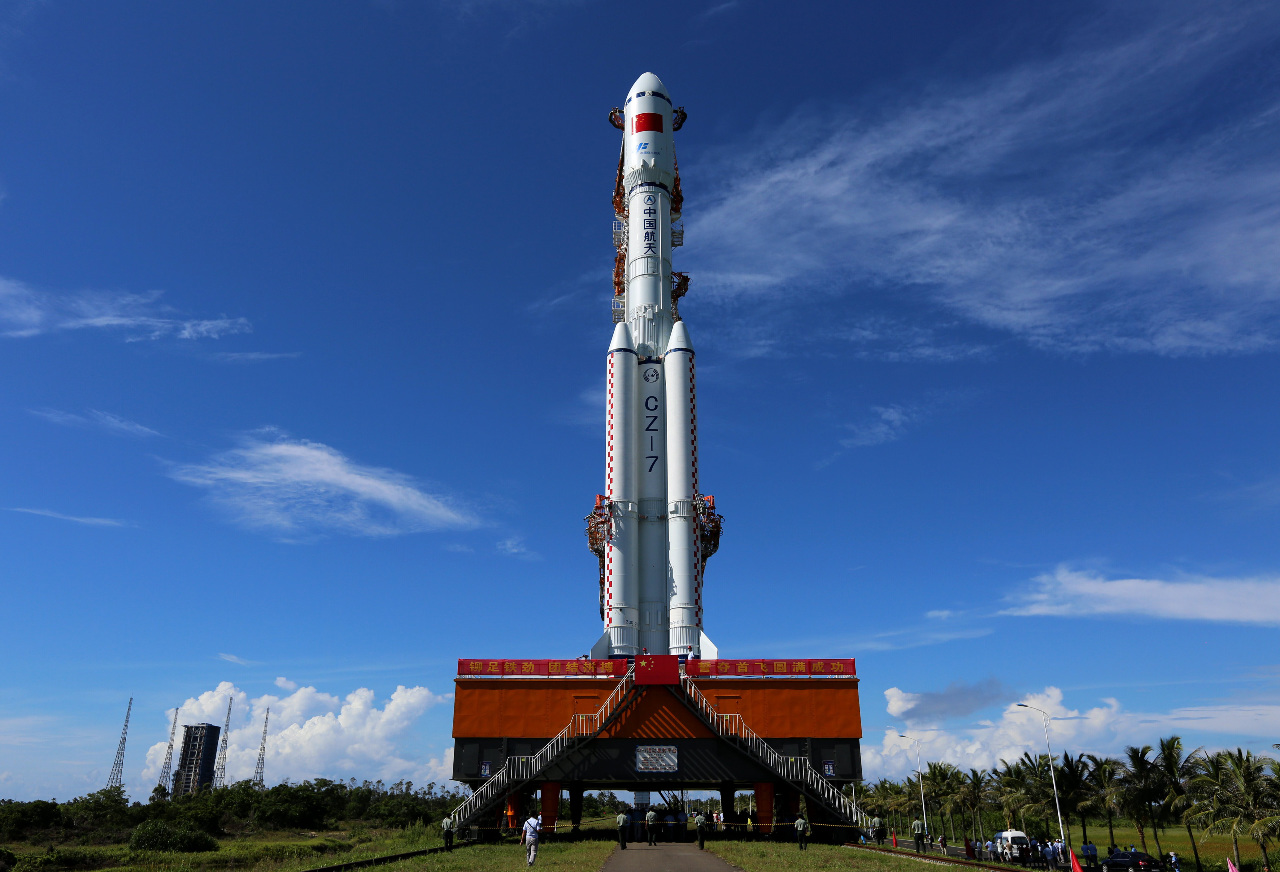With the successful launch of its new Long March 7 (LM-7) heavy launcher on 25th June, China inaugurated a new launch facility and a new launch vehicle and tested a new reentry capsule for future manned spaceflight.
The 53m, 595t launcher is the most powerful member of the Long March family, at least until the arrival of LM-5, scheduled for September. It can carry a payload of 13.5t into low earth orbit (LEO), or 7t into geostationary transfer orbit (GTO).
The launch occurred at 12:00 UTC from launch pad No. 2 at the new Wenchang launch centre, which was built between September 2009 and November 2014. Located on Hainan Island in southern China, it complements the three existing centres at Jiuquan, Taiyuan and Xichang. Its two major advantages are its southern location (19.38°N) and its position on the coast, which limits the risk to neighbouring populations and allows large launchers to be transported to the site by sea.
The payload on the inaugural LM-7 flight was a reduced-scale mockup of a new atmospheric reentry capsule for China’s next generation of manned launch vehicles. The 2.6m-diameter, 2.6t mockup was ejected 603 seconds into the flight into a 200/394km orbit. It was recovered in Mongolia around 20 hours later.
Four other small experimental satellites released into LEO are still in orbit.

